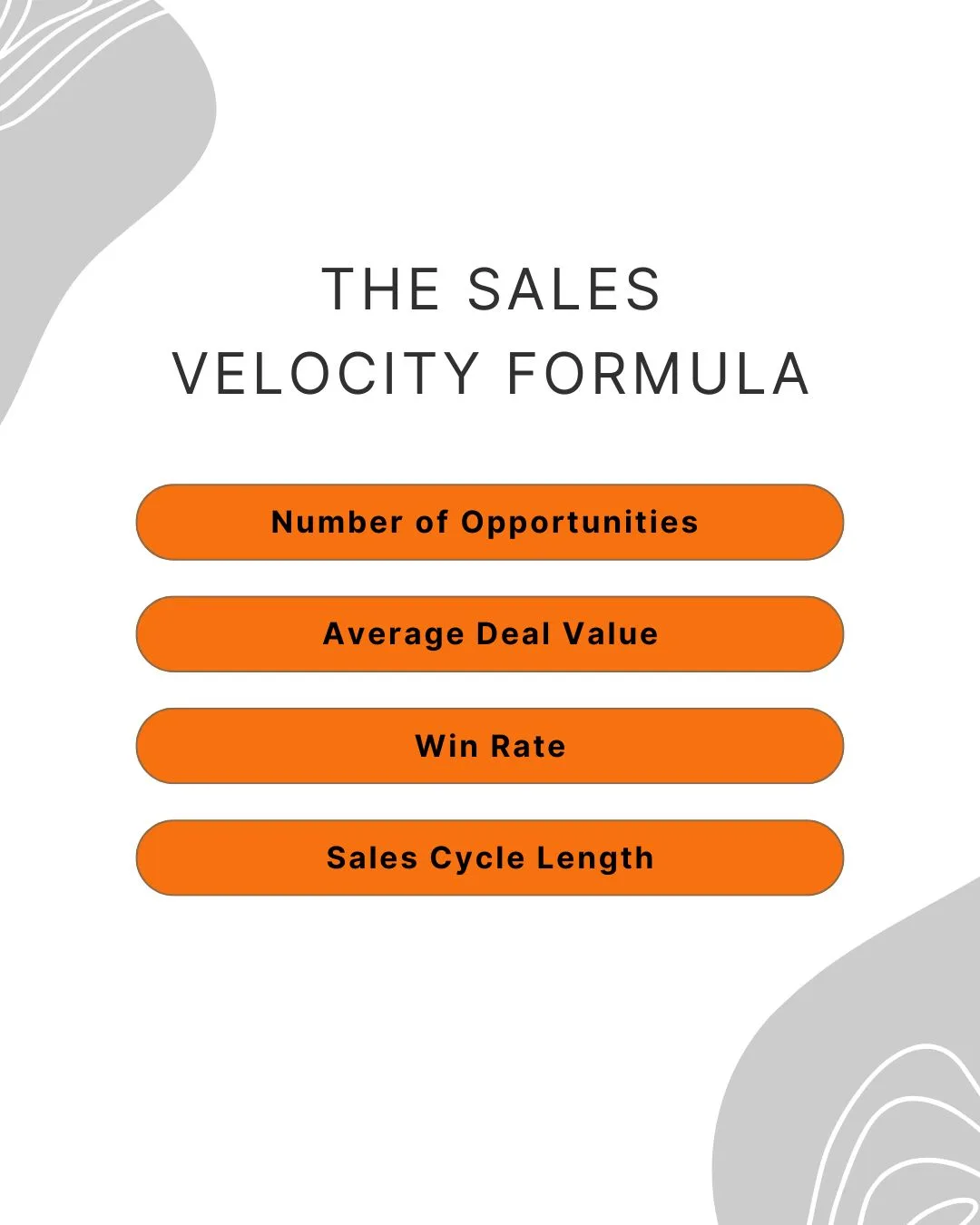"If you've ever felt like your sales team is doing everything right—but revenue still moves at a crawl—this post is for you."
Sales velocity is the under-the-radar metric that might be slowing you down. And once you learn how to track and improve it? That's when deals start closing faster, reps stay fired up, and your revenue engine really starts to hum.
TL;DR
This guide dives deep into sales velocity—what it is, why it matters, and how to boost it. You'll learn the four variables that drive velocity, strategies for each, and how AI and automation tools can 10x your efficiency. Whether you lead a sales team or run your own shop, mastering this metric helps you grow faster, smarter.
Reader Queries
- What is sales velocity and why should I care?
- How do I calculate my sales velocity?
- What levers can I pull to improve it?
- What tools can help me accelerate deal flow?
- What are the most common mistakes sales teams make with velocity?
Table of Contents
- Introduction
- What Is Sales Velocity?
- The Sales Velocity Formula
- How to Improve Sales Velocity (Step-by-Step)
- Sales Tech Stack to Supercharge Velocity
- Best Practices for Sales Velocity Optimization
- FAQs
- Final Thoughts
Introduction
Speed Wins in Sales
Let's face it: long sales cycles kill momentum. And in a competitive market, speed is revenue. That's why understanding and improving sales velocity—the speed at which you move deals through your pipeline—isn't just a KPI, it's a strategy.
It shows you where deals stall, helps forecast revenue more accurately, and gives your team a clear path to higher performance.
What Is Sales Velocity?
More Than Just Speed—It's Strategic Insight
Sales velocity is the rate at which you turn opportunities into revenue. It reflects the overall health of your sales process and highlights how efficiently your team operates.
Think of it like this: if your pipeline is a freeway, sales velocity measures how smoothly traffic flows. Congestion? Bottlenecks? Dead ends? You'll find them—and fix them—once you're tracking velocity.
The Sales Velocity Formula

Here's How to Calculate It
Sales velocity uses four key inputs:
- Number of Opportunities – Qualified leads in your pipeline
- Average Deal Value – What each deal is worth
- Win Rate – % of deals you successfully close
- Sales Cycle Length – Average time to close a deal
Here's the formula:
Sales Velocity = (Opportunities × Deal Value × Win Rate) ÷ Sales Cycle Length
It's simple math with powerful implications. Increase any of the first three variables—or shorten the fourth—and your revenue speeds up.
How to Improve Sales Velocity
One Formula. Four Growth Levers. Endless Possibilities.
Let's break it down:
1. Rack Up More Opportunities
- Focus on qualified leads, not just volume
- Align marketing and sales on buyer personas and ICP
- Invest in referral programs and multichannel outreach
2. Increase Your Average Deal Value
- Upsell and cross-sell relevant upgrades
- Target bigger accounts and decision-makers
- Show ROI clearly with data, not fluff
3. Improve Your Win Rate
- Qualify leads rigorously with lead scoring
- Personalize your pitch around pain points
- Use social proof (case studies, testimonials) early and often
4. Shorten Your Sales Cycle
- Identify and fix friction in the pipeline
- Automate admin tasks (follow-ups, scheduling, data entry)
- Equip reps with quick-response content (FAQs, objection busters)
Even a small lift in each of these areas can have a compounding effect on revenue growth.
Sales Tech Stack to Supercharge Velocity
Tools That Move the Needle
CRM Systems
CRMs like Hubspot help centralize customer data and optimize every sales touchpoint. Think of it as your sales team's brain—and nerve center.
Sales Automation Tools
Free up your team's time and boost output with tools like:
| Tool Type | Example Tools | Velocity Impact |
|---|---|---|
| Email Outreach | Inloop (Ines AI Sales Rep) | Personalized emails at scale |
| Lead Scoring | HubSpot, Salesforce | Prioritize leads that are most likely to convert |
| Meeting Scheduler | Calendly, Cal | Minimize back-and-forth to book meetings |
| Proposal Generator | PandaDoc, Proposify | Send polished proposals faster |
| Call Dialer | Aircall, CloudTalk | More dials, more conversations, less idle time |
Best Practices for Sales Velocity Optimization
Avoiding Pitfalls and Doubling Down on What Works
- Measure over time – Monthly or quarterly tracking reveals trends
- Keep your data clean – Garbage in = garbage insights
- Use consistent formulas – Standardize inputs across teams
- Empower your reps – With tools, content, and training
- Celebrate wins – Momentum breeds motivation
FAQs
Q: What is sales velocity in sales? A: It's a metric that measures how quickly your sales team converts opportunities into revenue.
Q: Why is sales velocity important? A: It helps optimize your pipeline for faster, more predictable revenue growth.
Q: How do I increase my sales velocity? A: Improve qualified leads, deal value, win rate, or reduce sales cycle length.
Q: What tools help with sales velocity? A: CRMs, email automation, lead scoring tools, proposal builders, and dialers.
Q: What's a good sales velocity? A: That depends on your business model—but consistently improving it is always a win.
Final Thoughts: From Slow-Mo to Speed Mode
Sales Velocity Is the Growth Multiplier You've Been Missing
You can have great leads, a killer pitch, and a solid team—but if your deals are stuck in limbo, it's time to look at velocity. The best sales orgs don't just close deals—they close them fast.
Track it. Improve it. Automate it. And if you're ready to level up, tools like Inloop can help you do it with precision and speed.
🔑 Fast deals = fast growth. Start accelerating today.

